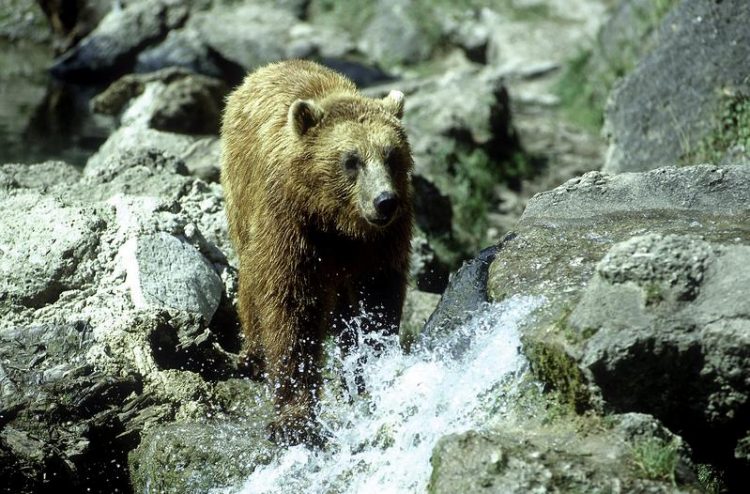New treatment strategies for chronic kidney disease from the animal kingdom

Biomimetics offers an innovative approach to solving human problems by imitating strategies of for example hibernators like bears found in nature. Georg Rauer
Through certain genetic modifications, the process of evolution has resulted in a great variety of adaptations to different environments in the animal kingdom. Many species have developed fascinating mechanisms that provide resistance to disease or help protect their cells against ageing and oxidative stress in extreme conditions. It would therefore make sense to investigate these mechanisms in other species and adapt the insights gained to develop new strategies in the field of human medicine.
An increased focus on biomimetics, the field of research that studies this approach, could lead to a medical breakthrough in the treatment of chronic kidney disease. An international, interdisciplinary research collaboration, including scientists from the Research Institute of Wildlife Ecology, has now provided an initial overview of which animal mechanisms could be useful for the development of new therapeutic approaches to this globally spreading disease.
Solutions sought for chronic kidney disease
Physical adaptations that are of interest to biomimetics include the outstanding longevity of naked mole rats, for example, or the ability to survive extreme conditions like hibernation. “Biomimetics attempts to copy strategies that have already been tried and perfected by nature over thousands of years,” explains Johanna Painer from the Department of Integrative Biology and Evolution.
Painer, in an international collaboration with experts from various different fields, researches which of these elements from the animal kingdom could be applied to human health. “We are comparing examples from human and veterinary medicine as well as from the field of biology to more quickly learn about the development of certain problems and then minimise them in the future,” the researcher says.
One of these problems for which solutions may be found in the animal kingdom is chronic kidney disease. This disease, which is becoming increasingly prevalent worldwide, is associated with many complications, such as cardiovascular disease, osteoporosis, muscle wasting and premature ageing. But kidney disease is also a problem in the animal kingdom. Domestic felines and wild cats are quite frequently affected by chronic kidney disease. “A possible cause is the high meat consumption and the resulting changes of the bacteria in the intestine,” says Painer. Other animals, like the common vampire bat or hibernators like the bear, have developed mechanisms that project them against the disease.
Future studies should investigate the mechanisms which, on the one hand, cause the disease in animals and, on the other hand, are responsible for certain protective effects. “Studies of felids may provide information on links between red meat consumption, gut microbiota and kidney disease. Studies of hibernating bears could help identify new strategies to treat and prevent complications such as muscle wasting, pressure ulcers, thrombosis and osteoporosis during longer periods of bedriddenness,” concludes Painer. New possibilities of organ preservation may also be found.
The advantage offered by biomimetics lies in its interdisciplinary nature. The collaboration between nephrologists – these are specialists in kidney disease and high blood pressure – and experts from other fields, such as veterinary medicine, zoology, molecular biology, anthropology and ecology, could introduce a novel approach for improving human health and help to find new treatment strategies for chronic kidney disease. “Collaboration between various disciplines creates a synergetic effect that may result in the discovery of many novel therapeutic approaches. We should make increased use of such collaboration in the future,” says Painer.
Service:
The article “Novel treatment strategies for chronic kidney disease: insights from the animal kingdom” by Peter Stenvinkel, Johanna Painer, Makoto Kuro-o, Miguel Lanaspa, Walter Arnold, Thomas Ruf, Paul G. Shiels and Richard J. Johnson was published in Nature Reviews.
https://www.nature.com/articles/nrneph.2017.169
About the University of Veterinary Medicine, Vienna
The University of Veterinary Medicine, Vienna in Austria is one of the leading academic and research institutions in the field of Veterinary Sciences in Europe. About 1,300 employees and 2,300 students work on the campus in the north of Vienna which also houses five university clinics and various research sites. Outside of Vienna the university operates Teaching and Research Farms. The Vetmeduni Vienna plays in the global top league: in 2017, it occupies the excellent place 8 in the world-wide Shanghai University veterinary in the subject “Veterinary Science”. http://www.vetmeduni.ac.at
Scientific Contact:
Johanna Painer
Unit of Conservation Medicine
Research Institute of Wildlife Ecology
University of Veterinary Medicine Vienna (Vetmeduni Vienna)
T +43 1 25077-7251
johanna.painer@vetmeduni.ac.at
Released by:
Georg Mair
Science Communication / Corporate Communications
University of Veterinary Medicine Vienna (Vetmeduni Vienna)
T +43 1 25077-1165
georg.mair@vetmeduni.ac.at
https://www.vetmeduni.ac.at/en/infoservice/presseinformation/presse-releases-201…
Media Contact
All latest news from the category: Life Sciences and Chemistry
Articles and reports from the Life Sciences and chemistry area deal with applied and basic research into modern biology, chemistry and human medicine.
Valuable information can be found on a range of life sciences fields including bacteriology, biochemistry, bionics, bioinformatics, biophysics, biotechnology, genetics, geobotany, human biology, marine biology, microbiology, molecular biology, cellular biology, zoology, bioinorganic chemistry, microchemistry and environmental chemistry.
Newest articles

Can lab-grown neurons exhibit plasticity?
“Neurons that fire together, wire together” describes the neural plasticity seen in human brains, but neurons grown in a dish don’t seem to follow these rules. Neurons that are cultured…

Unlocking the journey of gold through magmatic fluids
By studying sulphur in magmatic fluids at extreme pressures and temperatures, a UNIGE team is revolutionising our understanding of gold transport and ore deposit formation. When one tectonic plate sinks…

3D concrete printing method that captures carbon dioxide
Scientists at Nanyang Technological University, Singapore (NTU Singapore) have developed a 3D concrete printing method that captures carbon, demonstrating a new pathway to reduce the environmental impact of the construction…



